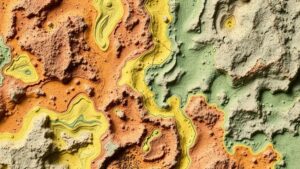How to Study Old Water Sources for Native American Artifacts
Studying Old Water Sources for Native American Artifacts
The examination of old water sources provides a vital avenue for understanding Indigenous cultures, particularly Native American artifacts. These locations serve as critical archaeological contexts where artifacts such as tools, pottery, and ceremonial items can be recovered. This article aims to explore the methodologies employed by researchers to study ancient water sources, the significance of findings, and the implications for interpreting Native American history.
Understanding the Historical Context
Water sources were essential for the survival of Native American tribes, providing not only hydration but also supporting agriculture, transportation, and trade. Notable examples can be seen along the banks of the Mississippi River, where the Cahokia civilization flourished around 600 CE to 1400 CE. The strategic use of these water bodies influenced settlement patterns and social structures within tribes.
Methodologies for Study
Researchers utilize various interdisciplinary methods to study old water sources in the context of Native American artifacts. Key methodologies include:
- Survey and Mapping: Archaeologists often conduct surveys to map ancient river routes or lake beds. Techniques such as Geographic Information Systems (GIS) enable researchers to analyze topographical changes over time.
- Excavation: Systematic excavations at identified sites can uncover artifacts layered in sediment, indicative of historical water levels and settlement activities. For example, excavations near the Gila River in Arizona have revealed materials dating back thousands of years.
- Remote Sensing: Technologies such as LiDAR (Light Detection and Ranging) allow scientists to uncover landscape features obscured by vegetation. This method has proven essential in the study of ancient water management practices.
Fieldwork and Analysis
Fieldwork at water sources involves collaboration among various scientific disciplines, including archaeology, geology, and anthropology. Also to surveying and excavation, researchers analyze sediment cores to determine ecological changes over time. For example, core samples from lakes in the Great Basin have provided insights into climatic conditions and corresponding shifts in Native American subsistence practices.
Case Studies
Several case studies highlight the importance of studying old water sources for uncovering Native American artifacts:
- Lake Huron, Michigan: Underwater archaeology projects here have discovered tools and fishing gear used by the Anishinaabe people, much of which dates back to before European contact. These artifacts provide invaluable information about their fishing practices and lifestyle.
- Great Lakes Region: The study of ancient portage routes has uncovered trade networks that connected various tribes, illustrating the socio-economic complexities within the region. For example, archaeological evidence from the Kettle Point area shows early interactions between tribes and the utilization of natural waterways for trade.
Implications of Findings
The artifacts recovered from old water sources not only illuminate the daily lives of Native American tribes but also contribute to a broader understanding of their cultural practices and interactions with the environment. Also, findings can challenge contemporary narratives by providing evidence of sophisticated ecological adaptations and resilience among Native communities.
Conclusion
Studying old water sources is crucial for the reconstruction of Native American history and cultural heritage. As scholars continue to innovate in their methodologies, the integration of technology and interdisciplinary approaches will enable more comprehensive explorations of these vital archaeological sites. continued investigation promises rich insights into the lives of Indigenous peoples and their enduring connections to the land.
Actionable Takeaways
- Researchers and enthusiasts should consider contributing to ongoing archaeological projects focused on water sources, offering volunteer assistance or supporting funding initiatives.
- Community engagement programs can foster a deeper appreciation of local Native American history through organized educational workshops and public talks.
- Preservation efforts around significant water sites should be advocated to ensure their protection for future studies and cultural continuity.


